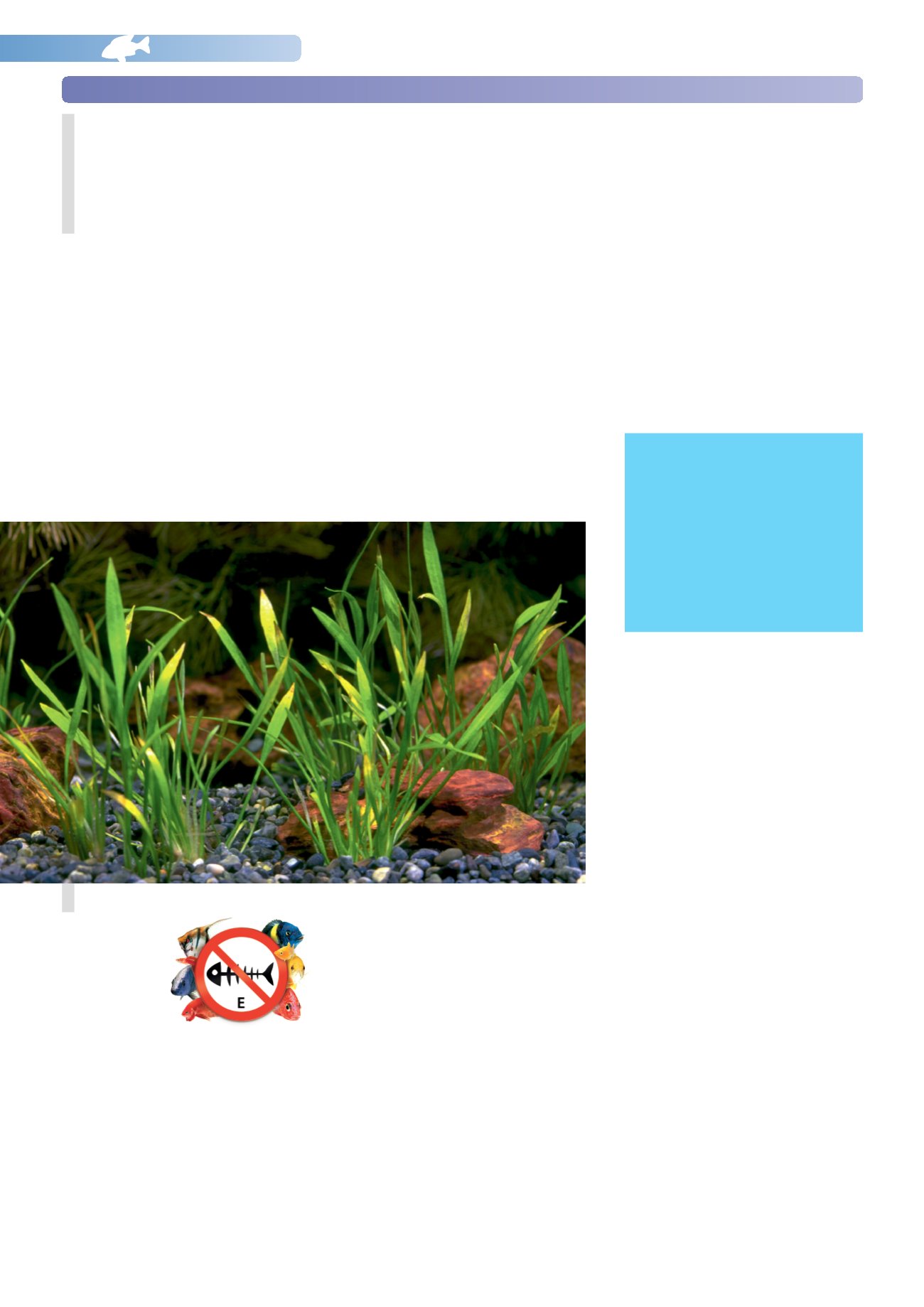
NEWS113
42
Thedebateastothecorrectsubstratefortheaquarium isasoldastheaquarium
hobby itself, and no end to the debate anywhere near in sight. One thing is
abundantly clear, however, and that is that there is no substrate that fits all
possiblerequirements intheaquarium,becausethatwouldbequite impossible.
Thecorrect substrate for
the freshwateraquarium
byBirgit Bautz-Schäfer
Basics
Anuniversal substrate: lime-freegravel,grain size3-5mm.
o right from the start you need to
ask yourself several questions.What
do I want to keep inmy aquarium? Am I
attracted toanyparticular aquaticplants?
Or particular fishes? Or do I simply want
anattractiveaquarium”?
S
Sandorgravel?
Fundamentally only lime-free sand or
gravel can be considered as a basic
substrate. Soil from the garden, peat,
potting compost, hydroponic substrates,
and lime-rich coral sand are essentially
unsuitable for use in a freshwater
aquarium. Soil, potting and other
composts, contain a whole lot of organic
material that has undesirable effects in
the aquarium, for example excessive
bacterial growth,and the resulting cloudy
water and lack of oxygen.Ahighnutrient
content also leads to vigorous algal
growth.All veryundesirable.
Clay substrates for hydroponic culture of
terrestrial plants can have unpredictable
consequences
in
the
aquarium.
Sometimes using such substrates in the
aquarium works, but it much more
frequently leads to explosive algal
growth, especially the dreaded blue-
green algae.The use of such substrates is
likeplayingRussianRoulette.
Substrates containing lime, such as coral
sand or marble chippings, are toxic to
plants.Onlyavery fewspeciescangrow in
such substrates. Normally only algae
thrive inanaquariumwith such substrate.
Grain size is important
The difference between lime-free sand or
gravel liesprimarily in thegrain size.Sand
is the term used when the individual
grains have a diameter between 0.063
and2mm,whileanything larger is gravel.
Very fine sand, such as desert sand, is
unsuitable for a normal aquarium, as it
compacts into a stone-hardmasswhen it
becomes wet. And no plants can grow in
that. In addition anaerobic areas may
form, inwhich sulfur compounds smelling
likebadeggsmaydevelopandpoison the
fishes.
Sand
From a purely chemical viewpoint lime-
free sand in Germany is almost always
quartz sand.Thereareother typesof sand
but they are so rare as not to be worth
mentioning here. It is important that the
sand for use in the aquarium is naturally-
created river sand, inwhich the individual
grains are rounded. There is also sand
manufactured by crushing rock, but the
grainshavesharpedges.Bear inmind that
quartz sand is the raw material for
manufacturing glass! Bottom-dwelling
fishessuffer inaquariawithsuchsand.The
barbels of catfishes and loaches may be
abraded; rays, flounders, eels, and other
species that like tobury themselves,suffer
skin injuries; species that like to sift the
sand for food, such as many barbs or
cichlids, suffer damage in themoutharea.
For these reasonsmanufacturedbuilder's
sand shouldnever beused.
Sand is of great importance in the lives of
DearReader,
thisarticlewaswrittenfortheGermanmarket
andthesuggestionsforuserelatetoproducts
availableintheGermanaquariumtrade.Ifyou
are buying substrate materials for the
aquariuminothercountriesthenpleasemake
sure you find out if the recommendations
given in the following article remain
applicable.


